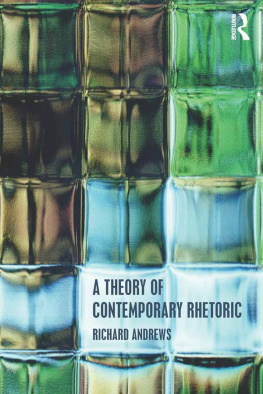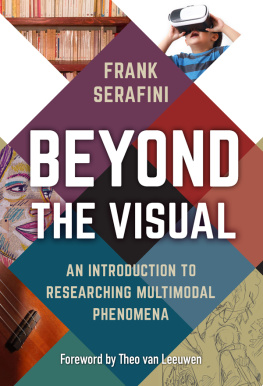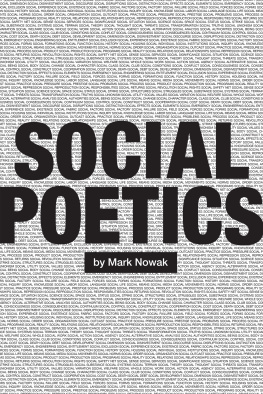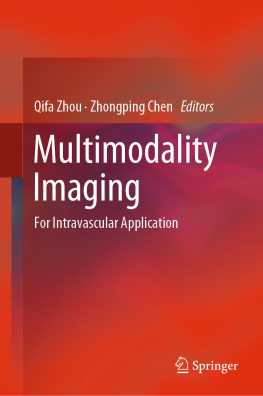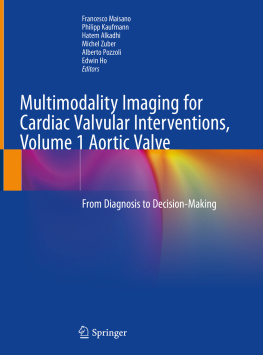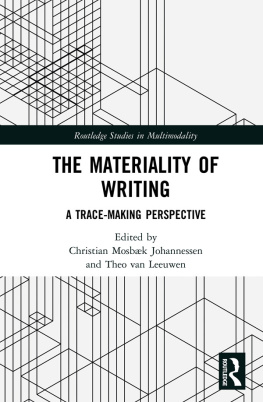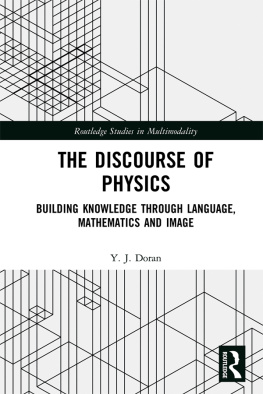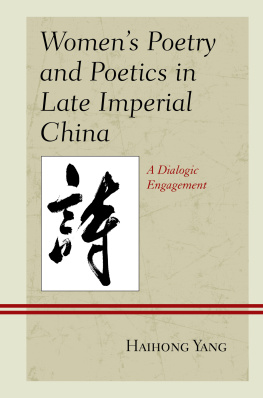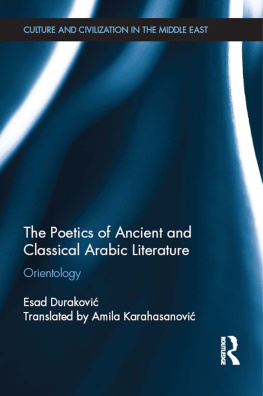Multimodality, Poetry and Poetics
This groundbreaking work takes multimodality studies in a new direction by applying multimodal approaches to the study of poetry and poetics. The book examines poetrys visual and formal dimensions, applying framing theory to such case studies as Aristotles Poetics and Robert Lowells The Heavenly Rain to demonstrate both the implied, because of the forms unique relationship with structure, imagery and rhythm, and the explicit forms of multimodality at workan otherwise little-explored research strand of multimodality studies. The volume explores the theoretical implications of a multimodal approach to poetry and poetics to other art forms and fields of study, making this essential reading for students and scholars working at the intersection of language and communication, including multimodality, discourse analysis and interdisciplinary literary studies.
Richard Andrews is Professor in English Education at the University of East Anglia, UK. He is the author of several books for Routledge, including Re-framing Literacy, A Theory of Contemporary Rhetoric and A Prosody of Free Verse: Explorations in Rhythm.
Routledge Research in Language and Communication
The Role of Language in the Climate Change Debate
Edited by Kjersti Flttum
Multimodality, Poetry and Poetics
Richard Andrews
Multimodality, Poetry and Poetics
Richard Andrews

First published 2018
by Routledge
711 Third Avenue, New York, NY 10017
and by Routledge
2 Park Square, Milton Park, Abingdon, Oxon OX14 4RN
Routledge is an imprint of the Taylor & Francis Group, an informa business
2018 Taylor & Francis
The right of Richard Andrews to be identified as author of this work has been asserted by him in accordance with sections 77 and 78 of the Copyright, Designs and Patents Act 1988.
All rights reserved. No part of this book may be reprinted or reproduced or utilised in any form or by any electronic, mechanical, or other means, now known or hereafter invented, including photocopying and recording, or in any information storage or retrieval system, without permission in writing from the publishers.
Trademark notice: Product or corporate names may be trademarks or registered trademarks, and are used only for identification and explanation without intent to infringe.
Library of Congress Cataloging-in-Publication Data
A catalog record for this book has been requested
ISBN: 978-1-138-69660-0 (hbk)
ISBN: 978-1-315-52389-7 (ebk)
Typeset in Sabon
by Apex CoVantage, LLC
For Gunther Kress
Contents
* Where the figures were originally in colour, these are collected and reproduced in colour at the end of the book.
Poetry is neither an elitist nor high art. It is grounded in song, visual presence and rhythm. The resource of wordsin whatever languagecombined with physical expression in oral form, and with the white page or screen in written form, is a compelling and low-budget mix. Work it in with a cocktail of other modesdance, movement, gesture, voice, still and moving imagesand in a range of media, including film, and the concoction is headier still.
My debt is greatest to Gunther Kress and colleagues at the Centre for Multimodal Research at UCL Institute of Education, London: Carey Jewitt, Jeff Bezemer, Andrew Burn, Anton Franks, Myrrh Domingo and Sara Price. They taught me that multimodality was the norm in the social semiotics of communication and helped to provide a lens through which to re-interpret the world of poetry and literature more generally. In my own offbeat way, I have pursued a more literary, rhetorical path in multimodal studies and found their intellectual companionship and insights to be inspiring. Along the way, I have found that the work of John Berger, who died during the writing of this book, provides an open window to the interfaces of writing (specifically poetry), photography, painting and film. In many ways, he was a precursor of contemporary multimodality. Another great debt is to Anna Milsom at the University of Leicester and Eugenia Loffredo at the University of East Anglia, co-curators (with Manuela Perteghella) of the travelling exhibition Transartation! who introduced me to the work of the artists, some of whom are cited in the present book. In particular, I am grateful to Kirsteen Anderson, Calvin Crowe, Vernica Gerber Bicecci, Ira Lightman, Clive Scott, Ricarda Vidal and Maria-Jose Blanco for references to their work. Ira Lightmans work Vista was first commissioned for One Poem in Search of a Translator: Rewriting Les Fentres by Apollinaire (Peter Lang, 2008). I am also grateful to John Christie for his generosity in permitting me to reproduce pages 1445 from Lapwing & Fox published by Objectif in 2016 (
I also want to pay tribute to the many students I have worked with on poetry, both at school and university levels; great teachers and poets themselves, Ian Bentley, Terry Locke, Peter Medway and Andrew Stibbs; the Arvon Foundation; New York University and its summer schools, especially Jim Fraser, Myrrh Domingo, Jill Jeffery and Sarah Beck; and the New York City Writing Project through Richard Sterling and Carla Asher. To Jeni Smith at the University of East Anglia and to Simon Wrigley for their continued work in inspiring teachers to write and to see themselves as writers. To Linda and Peter Combi, Nick Allen and Barbara Webb for a weekend touring York Open Studios in the spring of 2016 and especially to Linda for her artwork that is included in .
To Jane Duru at Wardour, Steve Woodward at A New Direction and especially to Selina Nwulu for permission to reprint A Strange Kind of Beauty in its entirety. The poem is by the Young Poet Laureate for London 2015/16, commissioned by A New Direction, Londons flagship cultural education agency, as a response to the challenges young Londoners face in engaging and contributing to the creative and cultural life of their city. The Young Poet Laureate for London is managed by Spread the Word, Londons Writer Development Agency, as part of the London Laureates programme, with generous support from Foundation for FutureLondon. An animated version of the poem can be viewed at www.anewdirection.org.uk/a-strange-kind-of-beauty.
Thanks must go to Mary Webb, artist, for her exhibitions at the University of East Anglia in 2011 and 2017/18, and for her generosity in supplying images of her work. I am grateful to Janette Ray for permission to reprint the cover of Build: Aspects of Construction; to Fiona Green at the Centre for Ceramic Art, York, for permission to reprint the catalogue cover of August 2015February 2016; to York Galleries Group and the Lotte Inch Gallery for the map of York, 2015. The image from the New York Daily Graphic of December 1873, although available freely on the Net, is from a blog by Martin Fox accessed in May 2016. Thank you, too, to Barbara Friedlander and Bob Cato for the recipe and photograph from Earth Water Fire Air, a book I have used much, but whom I have been unable to contact.
The section on Robert Lowell as part of from Instamatic Poems is reprinted courtesy of Foichl Miah at Carcanet Press.
I am grateful to Belarus Free Theatre and especially to its director, Vladimir Shcherban, and the actors, Grace Andrews, Oliver Bennett, Emily Houghton, Samantha Pearl and Alex Robertson for the performance of



